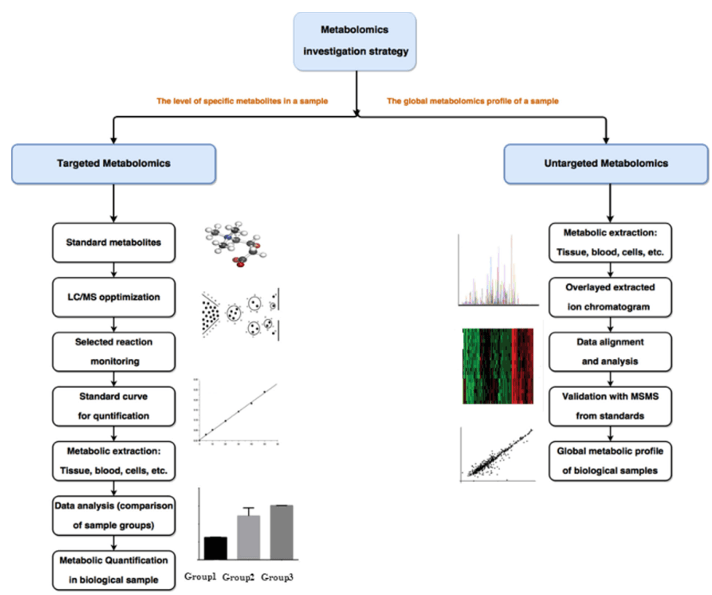Succinate and Succinic Acid Analysis Service
Submit Your InquiryWhat is Succinate and Succinic Acid?
Succinate and succinic acid are naturally occurring compounds that are vital to numerous biological processes. They belong to the class of dicarboxylic acids and play essential roles in cellular metabolism.
One of the key functions of succinate and succinic acid is their involvement in the tricarboxylic acid (TCA) cycle, which is also known as the citric acid cycle or Krebs cycle. The TCA cycle is a central pathway in cellular respiration, responsible for generating energy in the form of ATP.
Within the TCA cycle, succinate is produced through a series of enzymatic reactions. The conversion of succinyl-CoA to succinate is catalyzed by the enzyme succinyl-CoA synthetase, leading to the production of ATP. Succinate then acts as an important intermediate, serving as a precursor for several metabolic pathways.
Succinate plays a crucial role in the synthesis of various molecules. It serves as a building block for the production of amino acids, such as methionine and isoleucine, as well as fatty acids, which are essential components of cell membranes and energy storage. Furthermore, succinate contributes to the biosynthesis of heme, a vital molecule involved in oxygen transport and enzymatic reactions.
In addition to its role in the TCA cycle, succinate can be involved in alternative metabolic pathways. Under specific conditions, succinate can be converted to fumarate by the enzyme succinate dehydrogenase. This conversion is significant as it connects the TCA cycle to the electron transport chain, a process critical for the generation of ATP through oxidative phosphorylation.
The ability of succinate to participate in various metabolic pathways underscores its versatility and importance in cellular function. By serving as a key player in energy production and contributing to the synthesis of essential molecules, succinate and succinic acid play indispensable roles in the intricate web of cellular metabolism.
 Molecular structure of succinic acid
Molecular structure of succinic acid
Succinate and Succinic Acid Can be Used in:
- Understanding Cellular Metabolism: Quantifying the levels of succinate and succinic acid provides insights into the functioning of the TCA cycle, a central metabolic pathway in cells. This analysis helps researchers understand the metabolic state of cells and the efficiency of energy production.
- Biomarker Identification: Succinate and succinic acid levels can act as biomarkers for different diseases and conditions. Changes in succinate metabolism are associated with mitochondrial dysfunction, cancer, cardiovascular diseases, and neurodegenerative disorders.
- Drug Development: Studying the effects of potential drug candidates on succinate metabolism allows researchers to assess their impact on cellular energy production and mitochondrial function. This analysis guides the development of drugs targeting specific metabolic pathways or disorders related to succinate metabolism.
Metabolomics is the comprehensive analysis of small molecule metabolites in biological systems. Through the use of LC-MS, Creative Proteomics can provide comprehensive analysis of succinate and succinate, including their concentration levels, structure confirmation and potential metabolite analysis. the LC-MS platform is highly sensitive and specific, allowing detection of trace amounts of these compounds in a variety of sample types. This approach allows the identification of metabolic alterations associated with disease, drug response and environmental factors.
Technical Route of Succinate and Succinic Acid Assay

Sample Requirements of Succinate and Succinic Acid Assay
For the succinic acid assay, the following sample requirements are recommended:
- Biological Samples:
Recommended Volume: 100-500 μL
Sample Type: Blood, plasma, serum, urine, tissues, or other relevant biological matrices
- Environmental Samples:
Recommended Volume: 10-100 mL
Sample Type: Air samples, soil samples, water samples, or other environmental matrices
Please note that the recommended sample volumes are general guidelines and can be adapted based on the specific requirements of your study. Consult with Creative Proteomics for detailed instructions and customized solutions for your succinic acid assay.
Feedback to Customers
- Experimental steps
- Related mass spectrometry parameters
- Part of the mass spectrum picture
- Raw data
Project Cycle
- A standard experiment and analysis process takes about 1~4 weeks.
References
- Verdonk J C, De Vos C H R, Verhoeven H A, et al. Regulation of floral scent production in petunia revealed by targeted metabolomics. Phytochemistry, 2003, 62(6): 997-1008.
- Hatoum D, Annaratone C, Hertog M, et al. Targeted metabolomics study of 'Braeburn' apples during long-term storage. Postharvest Biology and Technology, 2014, 96: 33-41.
- Wang X, Zhao X, Zhao J, et al. Serum metabolite signatures of epithelial ovarian cancer based on targeted metabolomics. Clinica Chimica Acta, 2021, 518: 59-69.









